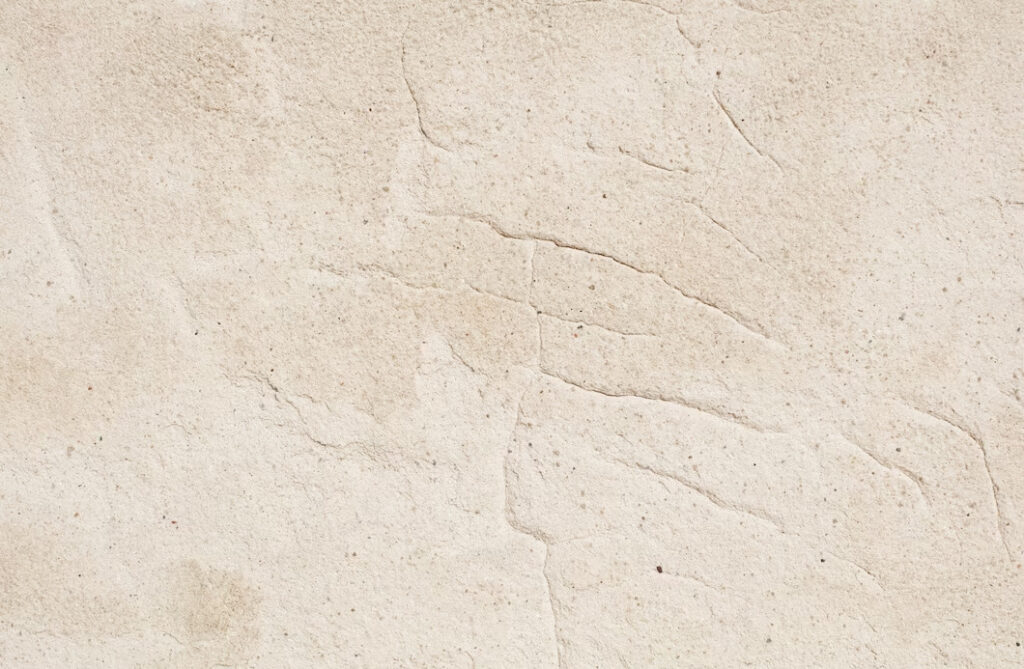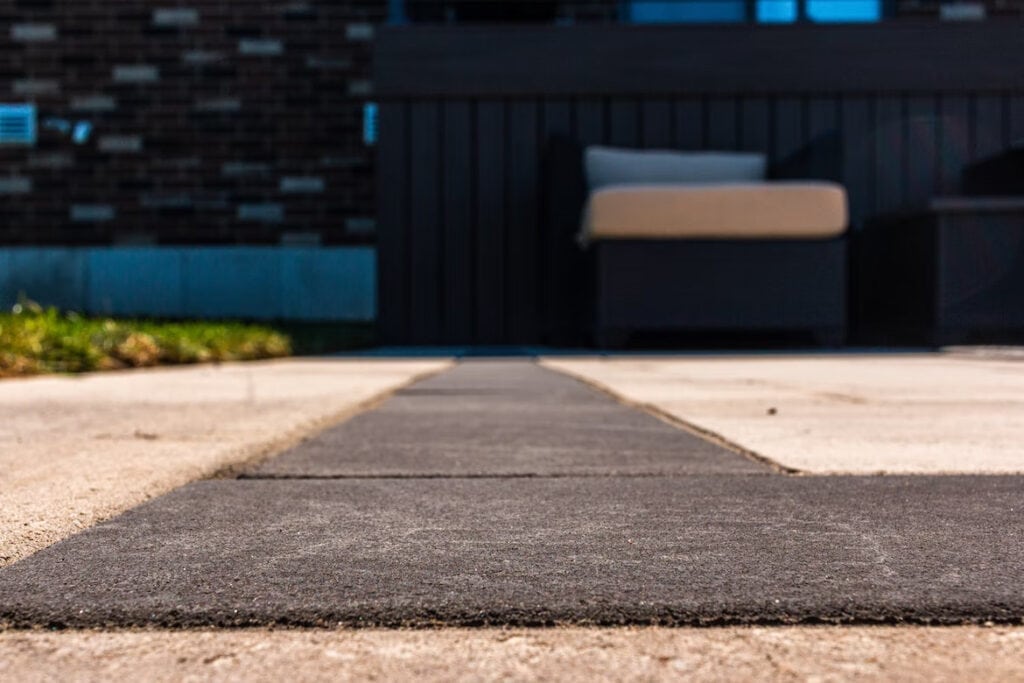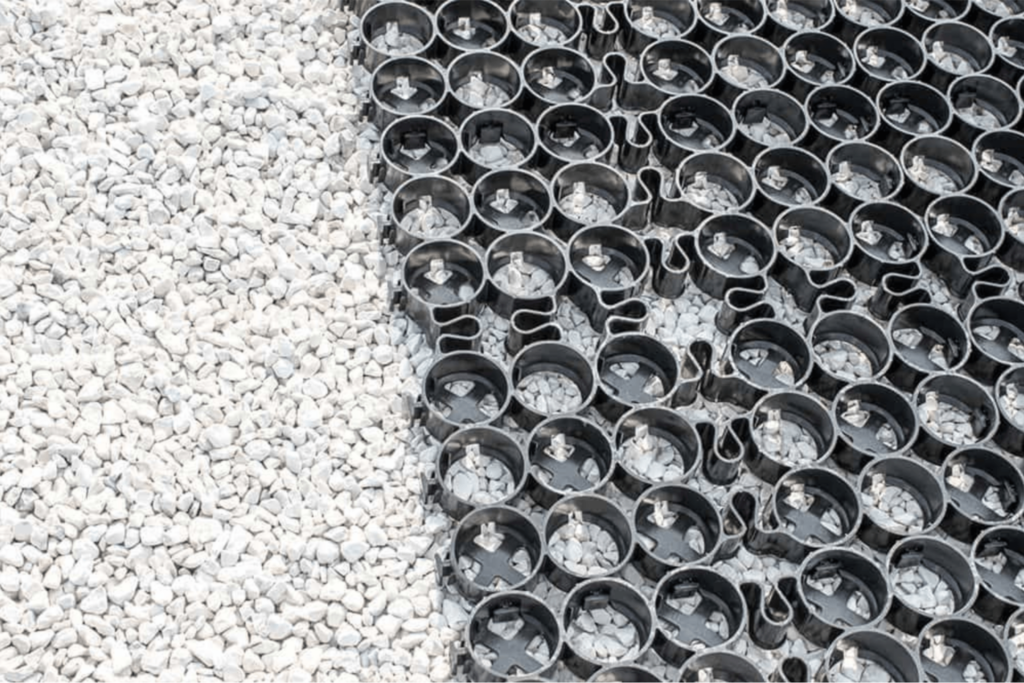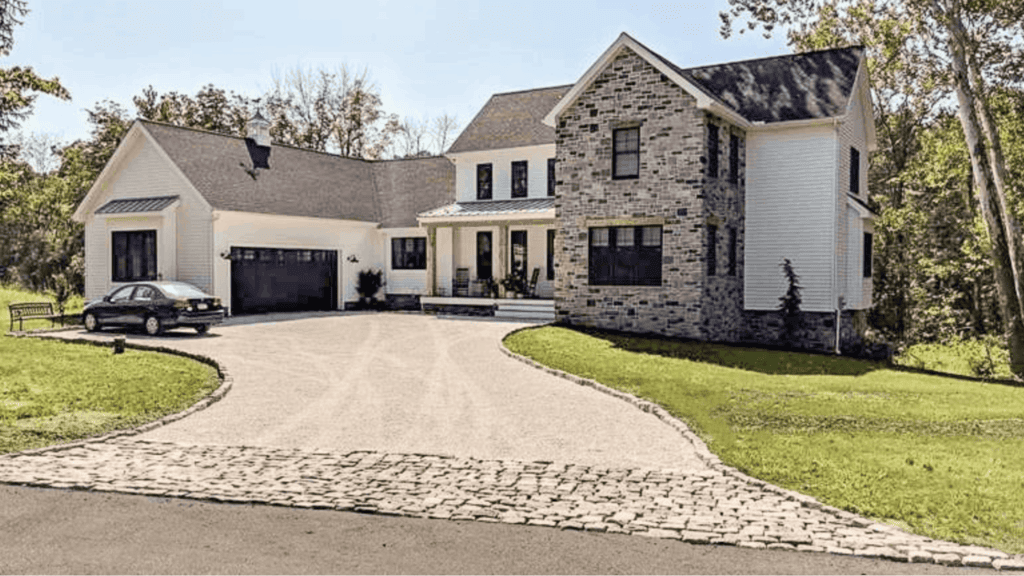
From the pyramids of Egypt to the White House and the Empire State Building, limestone has been used by architects and builders for some of the world’s most distinguished structures.
While you may not want your home to be a tourist attraction, you may be interested in the elevated aesthetic that natural limestone paving can provide.
What exactly is limestone paving? How is it installed? Is it expensive, and is it durable? Are there any practical alternatives to limestone paving? It is essential to consider all these factors to determine if limestone paving is suitable for your family’s home.
What is Limestone Paving?
Limestone is a type of sedimentary rock predominantly found in France, the UK, Ireland, Turkey, Portugal, Italy, Egypt, Tunisia, Inda, and portions of the U.S.
Making up about ten percent of the world’s sedimentary rock, limestone is found in a wide range of colors, from blues and grays to reds and tans, greens, and beige.
Limestone is available in various sizes, shapes, textures, and finishes, but the style preferred for limestone paving is typically flat, with a light to moderate surface texture.
How to Install Limestone Paving

The process of installing natural limestone paving is similar to the installation of brick and concrete paver patios and driveways. However, unlike the uniform and predictable shape and size of bricks and pavers, natural limestone can often be irregular and will require more labor-intensive installation.
Subgrade and Prep
As with any patio or driveway, the subgrade should be excavated and backfilled with gravel and stone dust or sand.
Your subgrade should be sloping away from your house to avoid pooling and water damage around your home.
Once appropriately graded and filled, you should compact your subgrade with a plate compactor until it is firm and well-settled.
Laying the Limestone Paving
If your limestone has been refined into squares or rectangles and is regular in shape and size, you can lay your limestone as you would any brick or concrete paver. Use string lines and spacers to maintain a consistent layout and joint size.
If your limestone is irregular, your layout will be a more tedious and artistic affair.
Using a hammer, chisel, and gas-powered stone saw with a diamond blade, you will need to cut, modify and refine your pieces of limestone to fit together nicely.
Finishing Touches
Once you have laid and stabilized all of your limestone, you will need to pour and sweep stone dust, sand, or polymeric dust into all of the gaps between your stones. This filling acts similarly to the grout between tiles.
Sand and stone dust allow flexibility between your pieces of limestone, but may occasionally need to be replenished as the fine particles spill out over time.
Polymeric dust is a type of stone dust modified with a binding agent. Once swept into the cracks between stones and meticulously cleaned off the surface of your limestone, you need to spray or sprinkle water into the now dust-filled cracks. The polymeric dust will then harden and form a durable concrete-like material. This grout style will not spill out of the cracks and joints between your limestone, but it will crack if your driveway or patio experiences significant movement.
Pros and Cons of Limestone Paving
As with any building product, limestone paving has several significant pros and cons:
Pros of Limestone Paving
Some of the benefits of limestone paving include the following:
- Natural Beauty – It’s hard to argue against the natural beauty of limestone paving. As a building material that has been used for thousands of years, its visual appeal is time-tested and proven.
- Variety of Shapes, Sizes, and Colors – Limestone is available in regular and irregular shapes and sizes and a wide range of colors and marbling patterns.
- Insulative Properties – Limestone will not be too hot underfoot in the sweltering summer heat, nor will it be too cold to the touch during the chilly winter months.
Cons of Limestone Paving
- Cost – Limestone can be extremely expensive, and can sometimes cost as much as $40 per square foot.
- Weight – Limestone is extremely heavy, which can make transportation and installation more difficult.
- Tedious Installation – Between its hefty weight and the laborious installation process, limestone paving can be expensive and time-consuming to install.
Using Permeable Pavers as a Practical and Cost-Effective Alternative to Limestone Paving

If beautiful and long-lasting natural driveways and patios are what you desire, permeable pavers can be a significantly cheaper, easier, and more environmentally-friendly option than limestone.
Permeable pavers are recycled plastic interlocking grids that, once installed, can be filled with gravel or planted with grass.
By supplementing gravel or grass with the engineered, durable structure of permeable pavers, you can completely eliminate ruts and protect your grass’s delicate roots from being crushed by vehicle weight.
Driveways, patios, walkways, and parking lots built with permeable pavers allow 100% of stormwater and runoff to replenish vital groundwater supplies, and they require minimal maintenance.
Permeable pavers are significantly more affordable than limestone paving.
Able to be installed by any motivated homeowner or DIYer, permeable pavers are affordable, lightweight, and easy to install, to reduce the time and labor costs that can quickly add up with limestone paving.
Create Naturally Beautiful and Environmentally-Friendly Outdoor Spaces with TRUEGRID

If you want to create a naturally beautiful outdoor space without the staggering costs or tedious installation of limestone paving, then TRUEGRID has you covered.
TRUEGRID has made 100% of its environmentally-friendly paving alternatives in the U.S. from 100% post-consumer recycled HDPE since 2013.
Offering a full range of products capable of creating beautifully green patios and walkways to indestructible industrial gravel parking lots, TRUEGRID has a product for all of your needs.
Visit TRUEGRID online to find a product that’s right for you, or get an estimate and discover how you can be true to your project and true to the environment with TRUEGRID!



